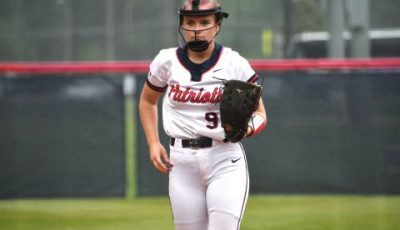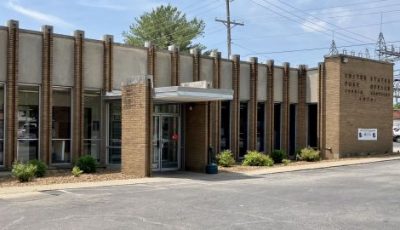Local teachers discuss the challenges of distance learning, their hopes for the rest of the school year
Schools have been going back into session in recent weeks, and things are looking a lot different than they ever have before.

Oak Grove Elementary School Teacher Keisha Wyatt talks with students remotely during a recent day of instruction.
Last spring, classes had to be cancelled due to the arrival of the COVID-19 pandemic that we are still dealing with some six months later. This forced educators, administrators and students alike to have to make a difficult shift to an at-home learning format. Due to the suddenness of the shift, we ended up with an odd mixture of digital and semi-physical instruction that saw parents keeping a close eye on their text and e-mail messages every day in order to learn what would be coming next.
Pick up and drop off times had to be coordinated to make sure students had their classwork in hand. Teachers quickly learned how to organize Zoom meetings, or relied on Facetime calls to keep track of their kids’ progress. Lesson plans were drastically altered overnight, and end-of-the-year activities were put on hold as we did all that we could as a community to simply keep as many people healthy as possible.
It was a chaotic time, no doubt, and most of us hoped that we wouldn’t have to deal with these changes again in the fall. But here we are, going back to school with COVID-19 still in the daily headlines, and still wreaking havoc throughout society.
Fall 2020 has, at the very least, not caught us off-guard, however. This time, teachers have had an entire summer to consider the possibilities, and to plan accordingly.
“In my opinion, things are much better now versus in the spring,” said Keisha Wyatt, a second grade teacher at Oak Grove Elementary School. “Last spring we found ourselves in unprecedented times with COVID-19, and the unchartered waters that came with NTI (Non-Traditional Instruction) days. This fall, I feel much more comfortable guiding students forward. The professional development we’ve had this summer has been very beneficial in focusing our efforts toward quality virtual instruction.”
Speaking about some of the major differences between the spring and fall, Wyatt said, “In the spring our non-traditional instruction was primarily packet-based, and unfortunately, much of the responsibility fell on the parents. This fall, our instruction has taken on a significantly broader scope with the implementation of daily Zoom meetings and newly incorporated learning programs. We, as teachers, have taken back our role as the primary instructor, and this is where we want to be.”
Another local teacher, Alan Bradshaw, spent the previous ten years at Lynn Camp prior to beginning a new phase of his career this fall at Corbin Primary School. When asked how he feels students will respond to online learning this semester versus in the spring, the third grade instructor explained, “In general, I think most kids want to be with their teachers and friends in-person. However, I think students will respond better now compared to last year. As of right now, we know that this method is what we have until at least September 28. Since everyone knows this, then lets all work together to make it the best that we can.”
As for what the learning curve has been like for the teachers who have had to make the transition to directing class from behind a computer screen, Bradshaw said, “I once adjusted from using a chalkboard to using white board. I adjusted from being able to communicate with a ‘walkie-talkie’ to taking messages with a new phone system. I was able to go from using an overhead projector to a document camera. From notes and letters to e-mail. From researching through encyclopedias to using the Internet.”
“My story is no different than anyone else’s, though. When teachers show perseverance and a strong will to succeed, we will learn how to be the best teacher possible, regardless of the circumstances.”
“Great teachers are always looking for ways to make themselves as effective as possible,” Bradshaw added. “And with this new technology, it will be slower for some of us than others. But just imagine months or years down the road how great it will be to use virtual learning as another tool in a ‘teacher’s tool belt’ for challenging students. We love doing what we do, and we will continue to do it by whatever means necessary.”
Obviously, elementary school teachers will have concerns that others will not simply because of the very young age of their students. Virtual instruction in middle and high school brings its own unique set of challenges, though, as explained by Whitley County High School chemistry teacher Stephen Davis.
“We are all entering into a whole new area of teaching,” Davis said. “Remote learning has already shown many challenges. However, using many different platforms such as Screencastify, Google Classroom, Zoom, Edge Unity, Flip Grid and Near Pod has given us an upper hand in making sure that our students are grasping the concepts taught, as well as keeping them involved.”
“As a veteran teacher, this is a new way to relay information to my students,” Davis continued. “I’ve said many times, if I have a stick and some dirt, I can teach chemistry. Fortunately, we’re not that far gone, but I have enjoyed gaining new tools for my toolbox of teaching.”
True, teachers everywhere are currently gaining valuable knowledge when it comes to virtual learning, and these online tools will continue to be useful long after COVID-19 becomes a thing of the past, but it doesn’t change the fact that these educators are eager to be back with their students again.
“I am very excited and eager to get back to in-person learning,” Wyatt said of hopefully resuming in-person classes at the end of this month. “I feel like the kids are eager to come back as well. They miss their friends. They really need the social interaction, and the daily structured setting, that our schools provide.”








